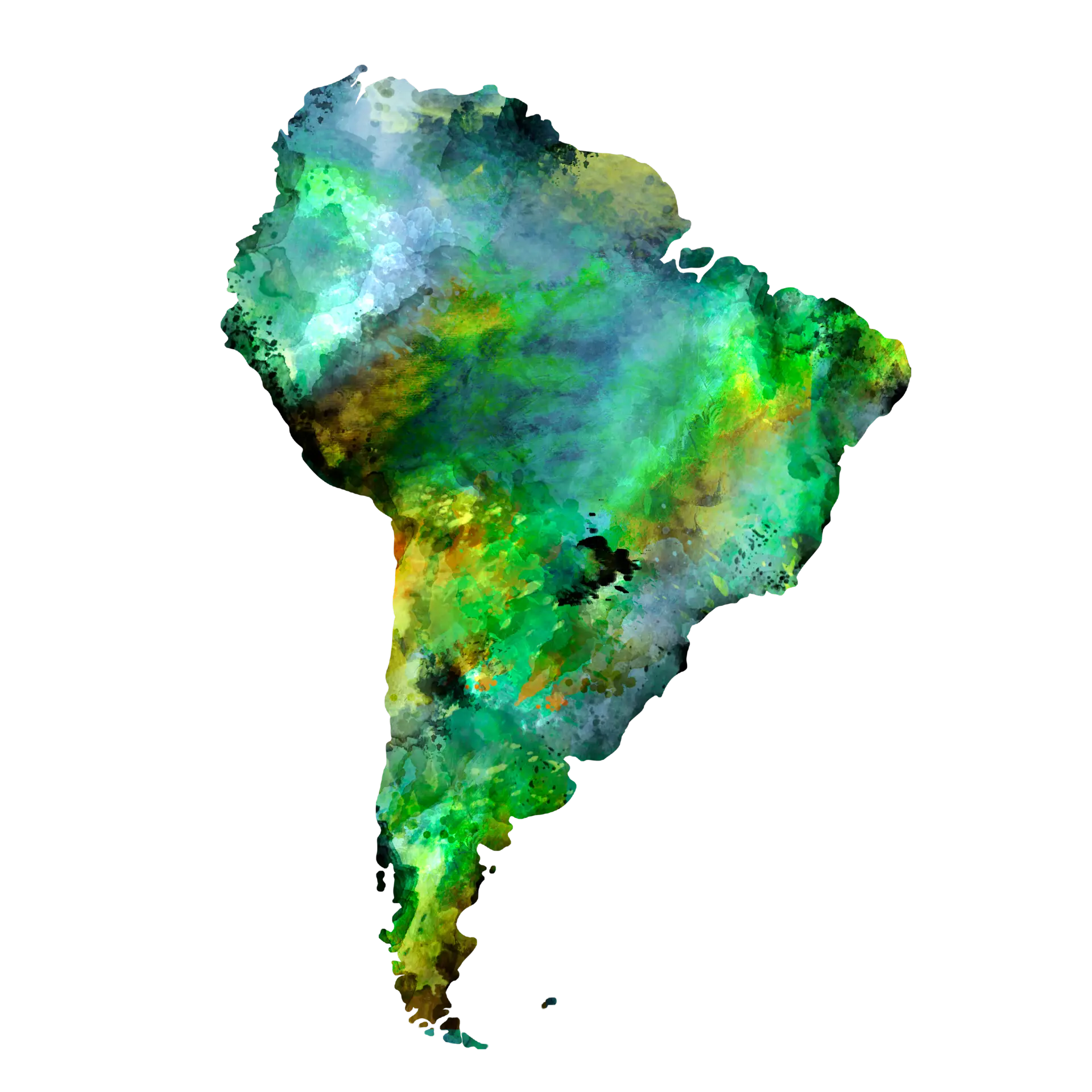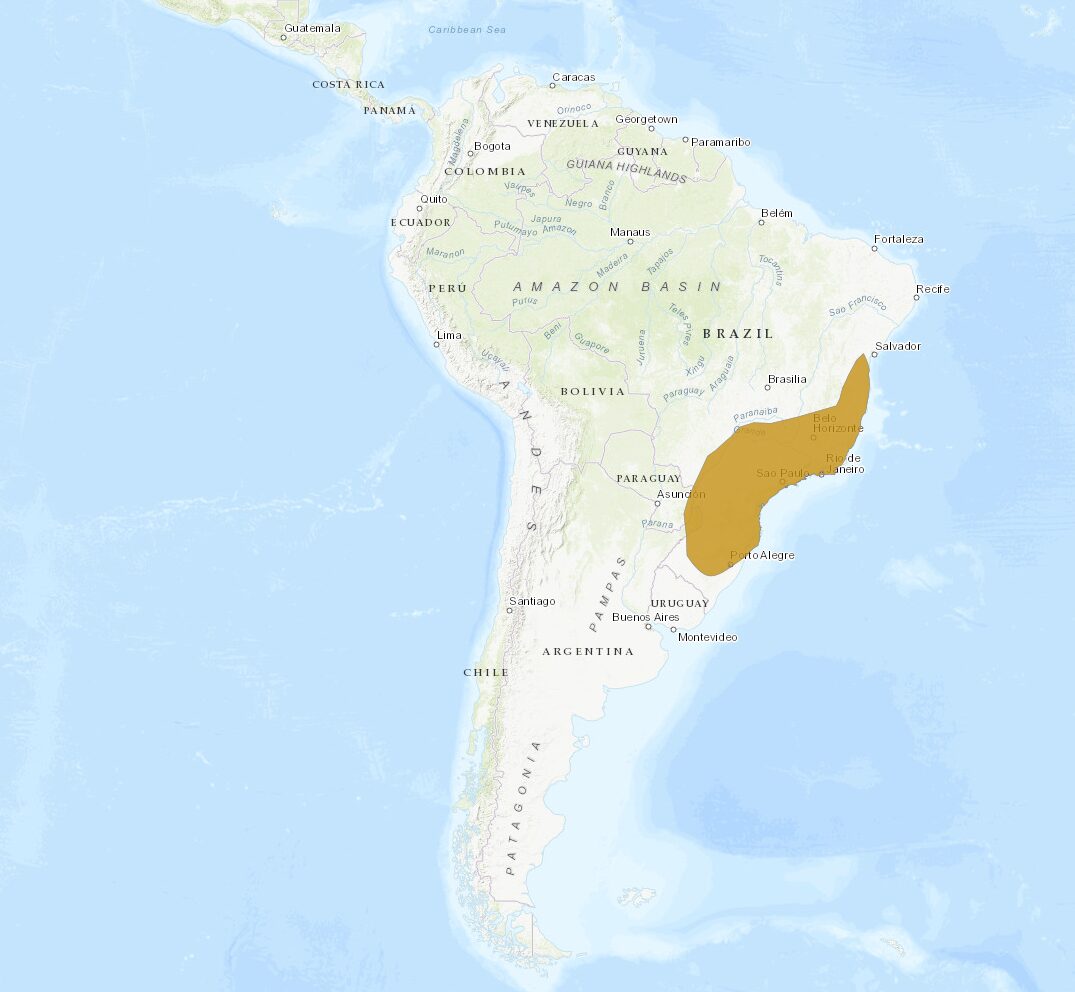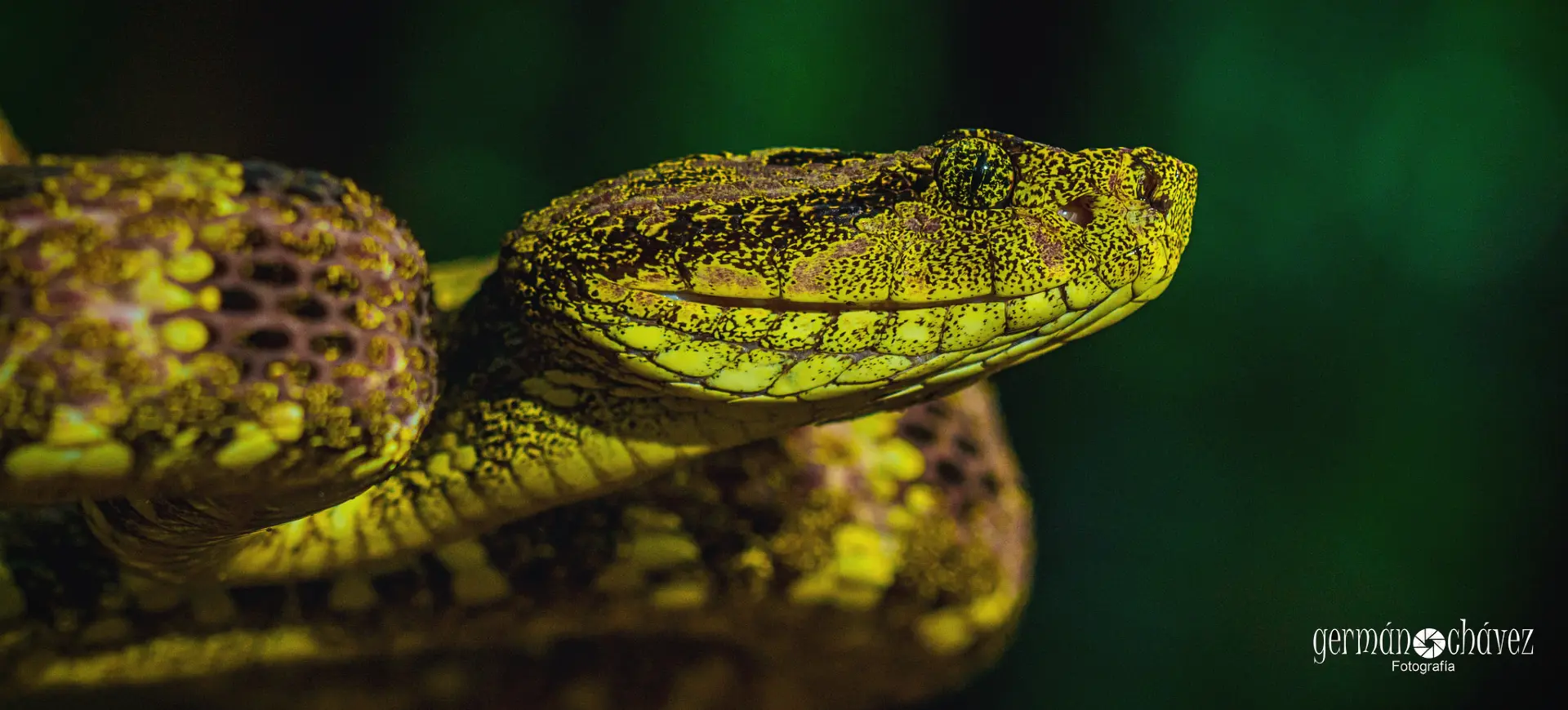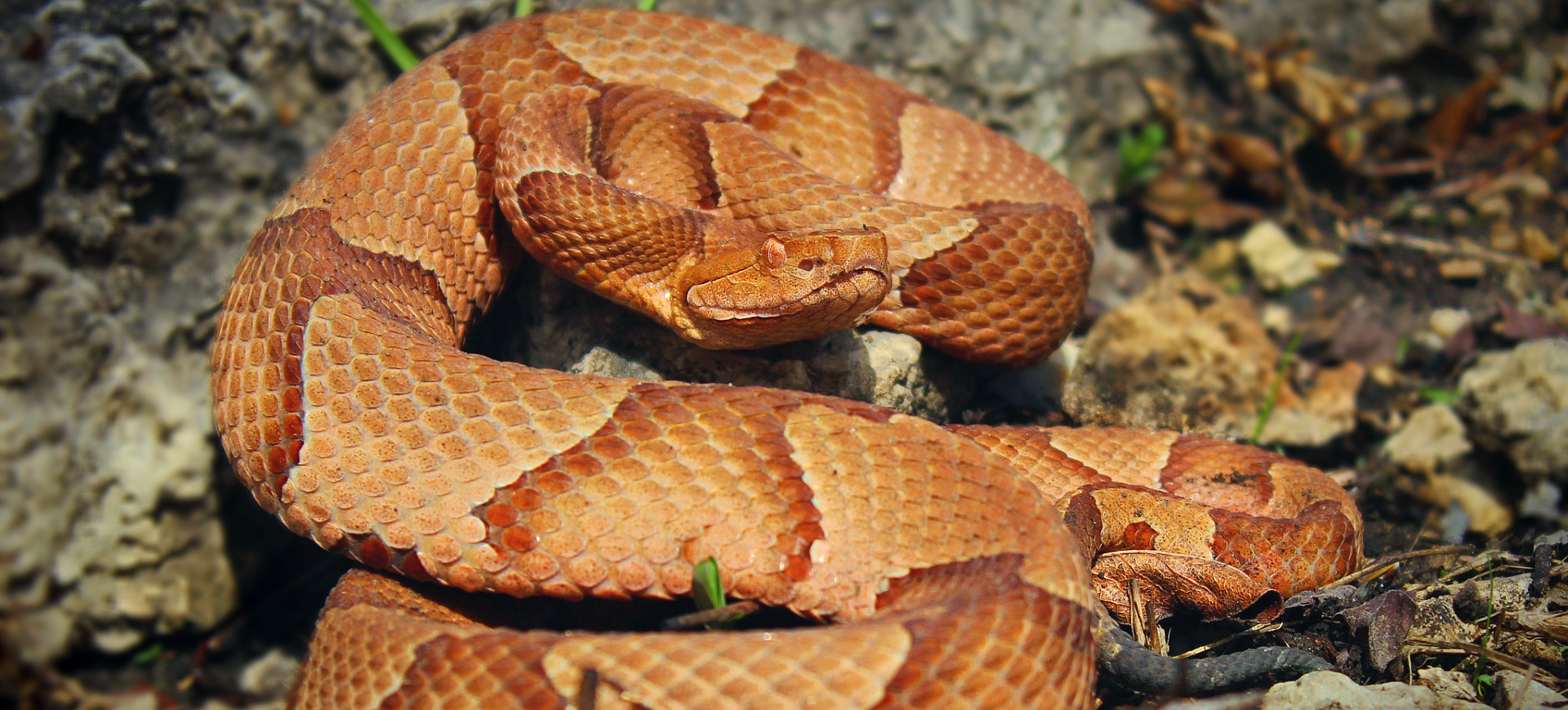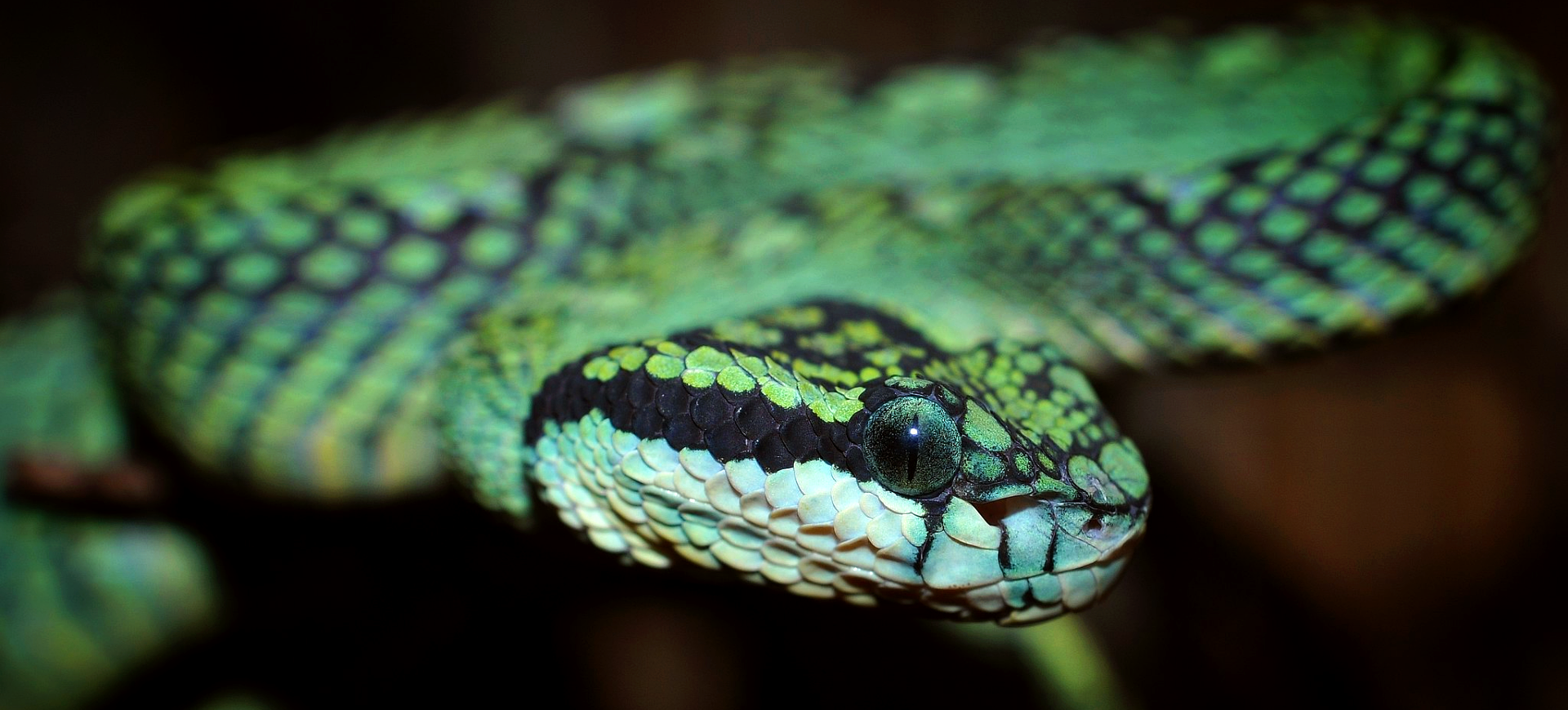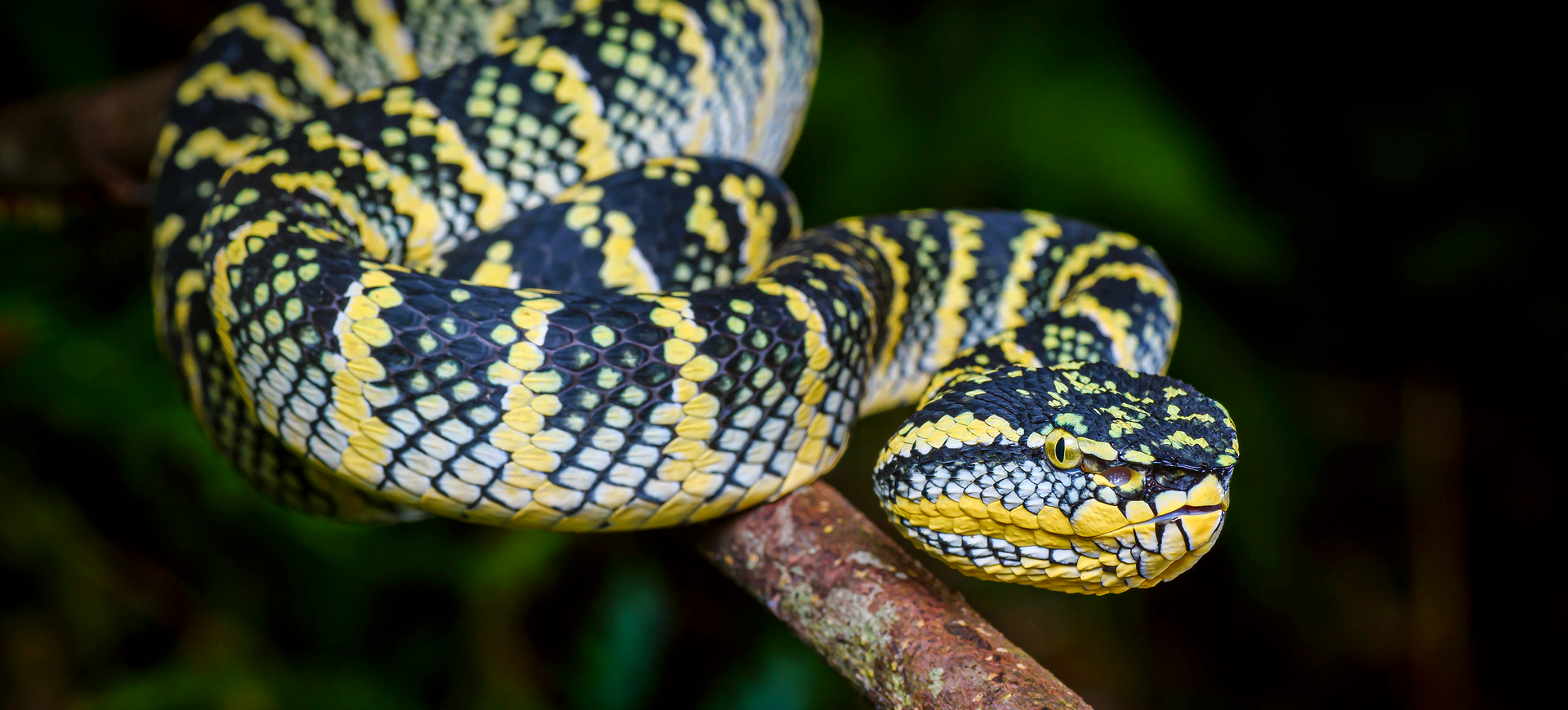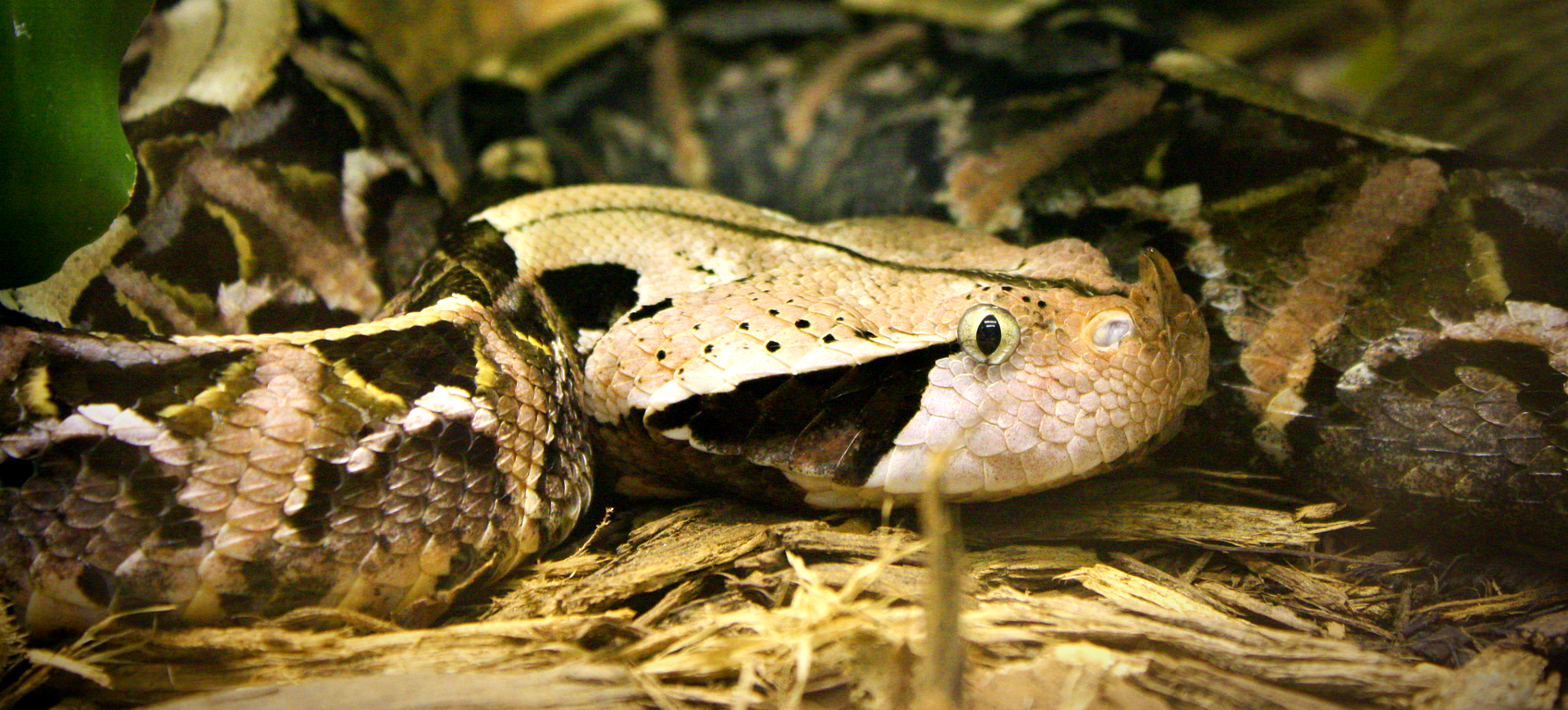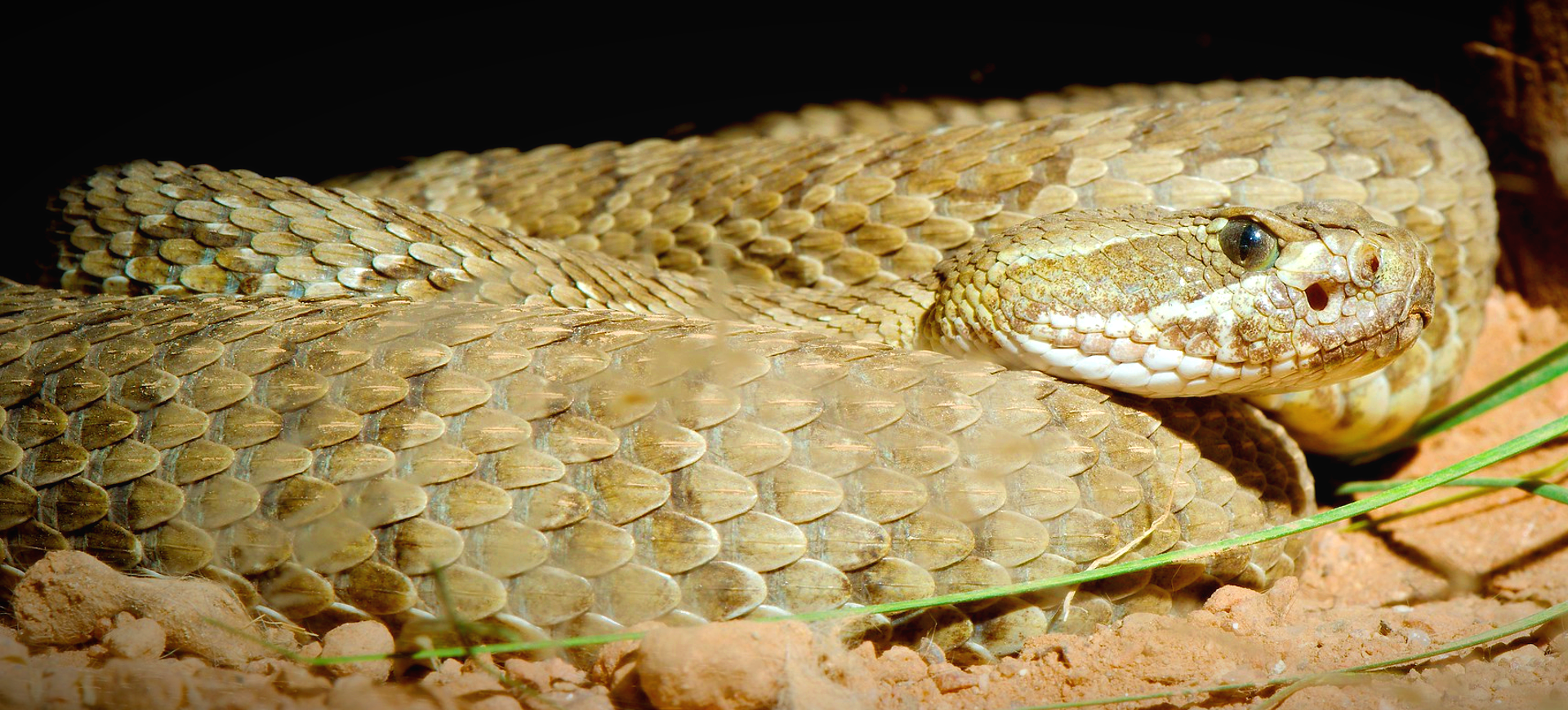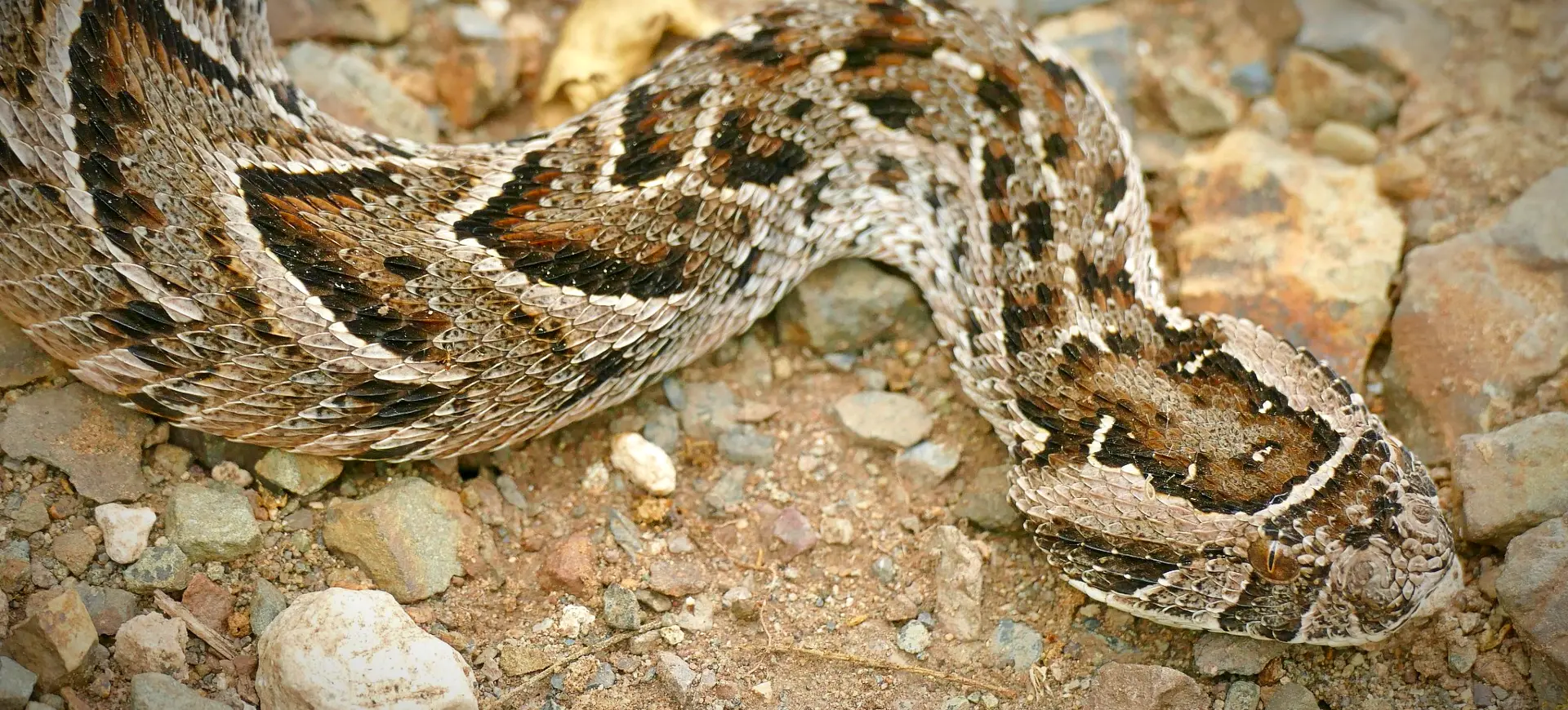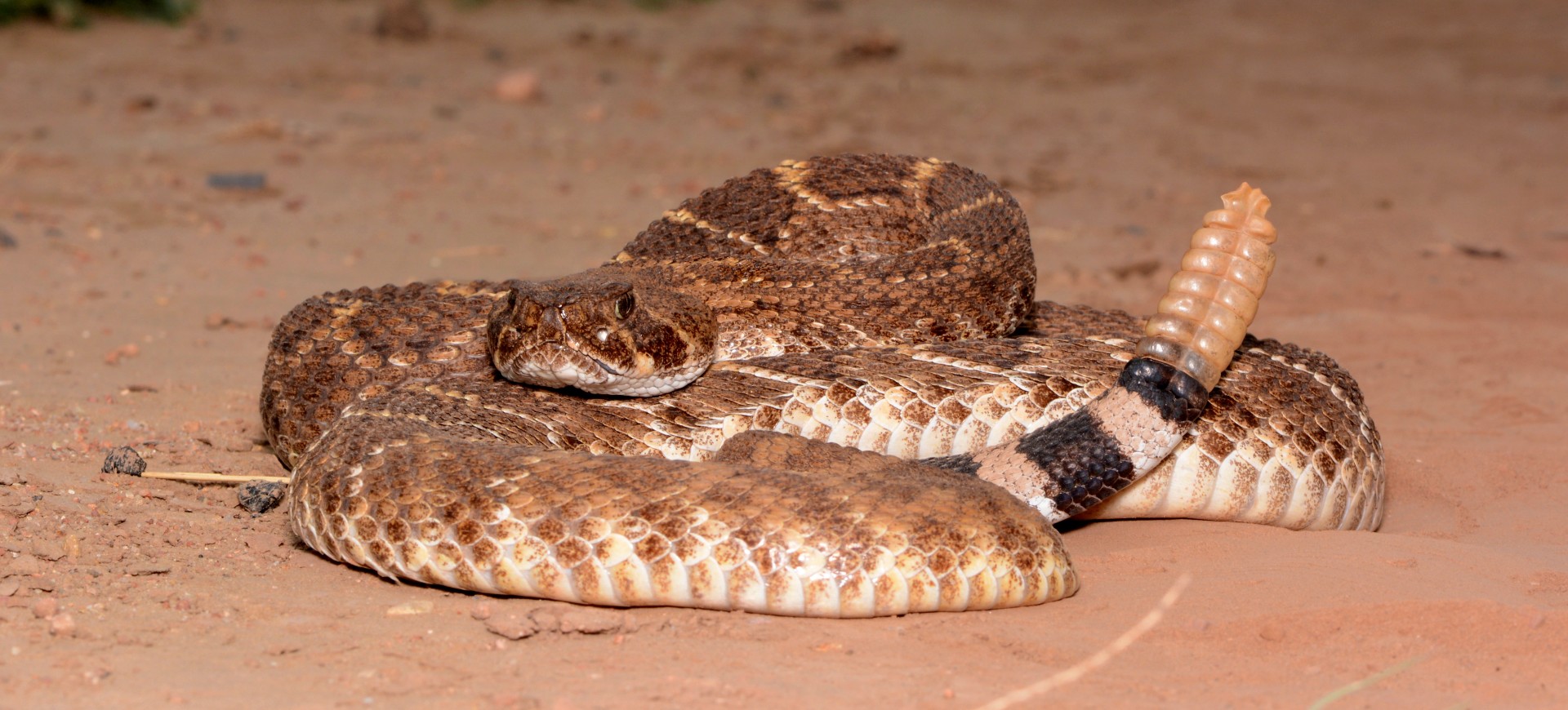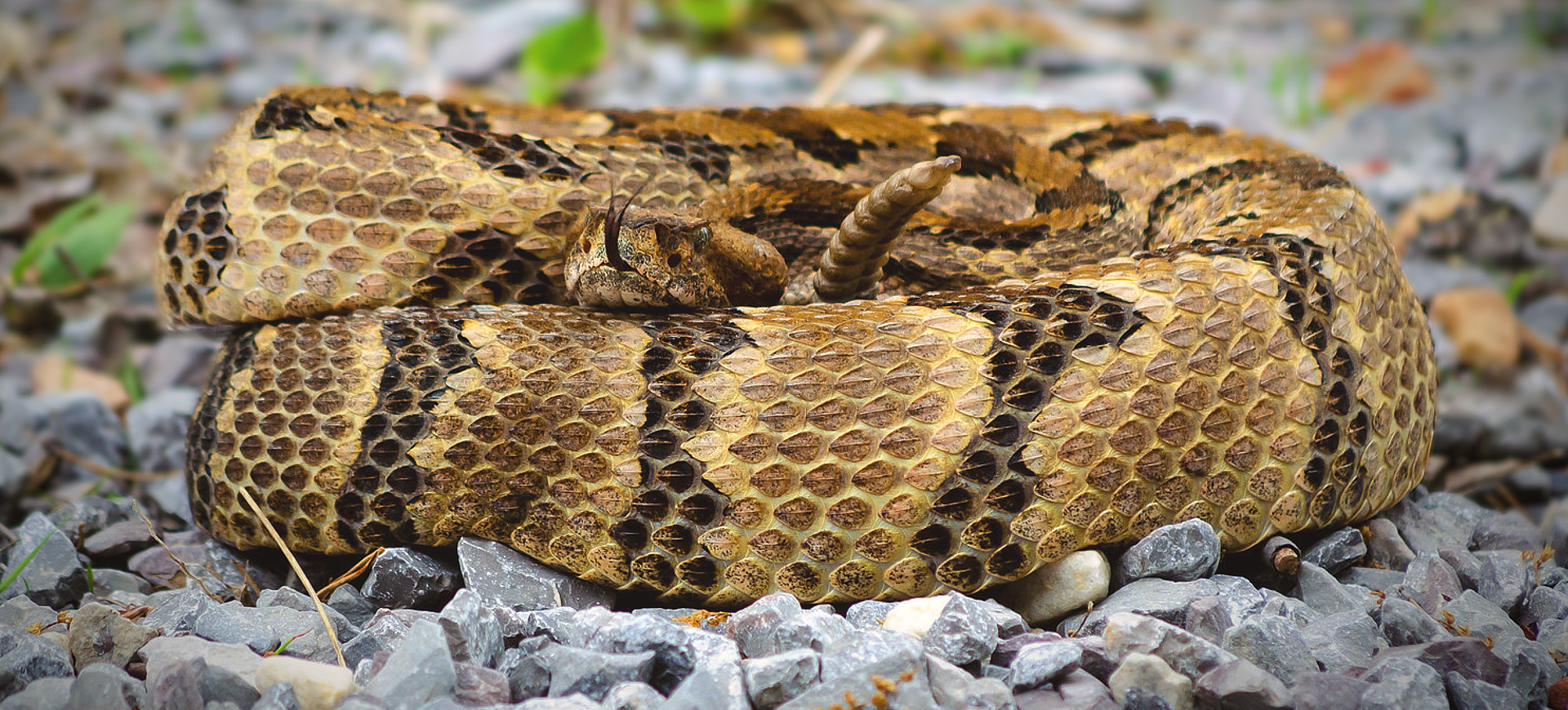Overview
The Jararaca, scientifically known as Bothrops jararaca, is a venomous pit viper species native to South America, particularly in Brazil, Paraguay, and northern Argentina. This snake is medium-sized, typically reaching about 150 cm in length, and is known for its potent hemotoxic venom, which is both anticoagulant and procoagulant. The Jararaca is a crucial species for the study of venom due to its accessibility and the volume of venom it can produce. Its venom has also contributed to the development of ACE inhibitors, a common group of antihypertensive drugs.
Characterized by its varied color patterns, typically a mix of brown and olive shades, the Jararaca effectively camouflages in the leaf litter of the forests it inhabits. It has a distinctive triangular head and a robust body, typical traits of the pit viper family. The species is mostly terrestrial but can climb into low vegetation when needed. It is known for its adaptability to various environments but prefers humid forests and grasslands close to water sources.
The Jararaca plays a significant role in the ecosystem by controlling the populations of small mammals, birds, and amphibians, serving as a natural pest control agent. However, it poses a risk to humans and is one of the leading causes of snakebite incidents in its range. Despite its danger, the snake avoids confrontation with humans unless threatened or provoked. Efforts to educate the public on avoiding and treating snakebite incidents effectively are important for coexistence.
Current distribution:
The Jararaca is primarily found throughout southern Brazil, extending into eastern Paraguay and northern Argentina. Its presence is notably dense in the Atlantic Forest region, a hotspot for biodiversity extensively diminished by human activity. Despite this, the Jararaca remains relatively common in many areas, although precise population numbers are hard to determine due to their secretive nature and the challenging terrain of their habitats.
Conservation status varies by region, but overall, the Jararaca does not currently face critical threats that would endanger its survival on a large scale. Continued monitoring and habitat conservation are essential to ensure it does not become threatened due to ongoing environmental pressures and habitat fragmentation.
Physical Description:
The Jararaca’s body is robust and muscular, a common trait among pit vipers. This allows for powerful strikes and the ability to subdue prey effectively. Its scale pattern is keeled, which provides texture to its skin and aids in camouflage among leaves and branches. The dorsal coloration typically features dark brown or black saddle-shaped bands on a lighter brown or gray background, which breaks up the snake’s outesnake’s natural forest floor debris.
The head of the Jararaca is distinctively triangular and broader than its neck, which is characteristic of many venomous snakes as it houses large venom glands. The eyes have vertical pupils, which optimize vision in low-light conditions, a critical adaptation for crepuscular and nocturnal activities. Sexual dimorphism is evident, with females generally larger and more robust than males, a common trait in many snake species where size plays a role in reproductive success.

Lifespan: Wild: ~15 Years || Captivity: ~20 Years

Weight: Male: 1.5-2 lbs (0.7-0.9 kg) || Female: 1.7-2.5 lbs (0.8-1.1 kg)

Length: Male: 20-35 in (50-90 cm) || Female: 30-60 in (75-150 cm)
Characteristic:
Native Habitat:
The Jararaca inhabits habitats from sea level up to 1,000 meters in elevation, primarily within the Atlantic Forest biome of South America. This environment is characterized by high humidity, dense vegetation, and a relatively stable climate, providing ideal conditions for the Jararaca. The snake’s habitat preference includes forested areas, grasslands, and rocky terrains, often near streams or other water bodies, essential for its hydration and cooling needs.
Its ability to thrive in various terrestrial environments has made the Jararaca one of the more common snakes in its geographic range. However, habitat destruction due to agriculture and urban development poses a significant threat to its natural habitats. Conservation efforts are crucial to preserving these environments for the Jararaca and the myriad of other species that share this biodiverse region.
WWF Biomes:
Biogeographical Realms:
Continents:
Diet:
Diet & Feeding Habits:
The Jararaca is an opportunistic predator that feeds primarily on small mammals, birds, and occasionally amphibians and reptiles. Its hunting strategy involves active stalking and passive ambush, waiting motionless for prey to come within striking distance. The snake utilizes its venom to immobilize prey quickly, preventing escape and beginning the digestive process before ingestion. This method of hunting minimizes the risk of injury to the snake and is energy efficient.
In captivity, Jararacas are often fed a diet of rodents, which provides the necessary nutrients for health and venom production. The feeding frequency depends on the snake’s size and metabolic rate, with larger snakes capable of handling larger prey items. This diet closely mimics their natural eating habits and ensures that captive snakes maintain a healthy weight and reproductive capability.
Mating Behavior:
Mating Description:
Jararaca snakes are ovoviviparous, meaning they give birth to live young rather than laying eggs. Mating occurs annually, and females attract males through pheromone trails. The mating process involves the male wrapping his body around the female and aligning their cloacae to transfer sperm. This process can last several hours, ensuring successful fertilization.
Females typically give birth to 5-15 young after a gestation period of about 6 months. The newborn snakes are independent from birth, equipped with venom and hunting instincts to survive independently. This reproductive strategy is advantageous in their predatory environment, as it skips the vulnerable egg stage that many other reptiles face.
Reproduction Season:
Birth Type:
Pregnancy Duration:
Female Name:
Male Name:
Baby Name:
Social Structure Description:
The Jararaca is predominantly solitary, coming together with others only for mating. Outside the breeding season, individuals maintain their territories and exhibit territorial behavior, especially during feeding. This solitary nature helps reduce competition for food resources, crucial for their survival as ambush predators.
Understanding the social and territorial behaviors of the Jararaca is essential for managing their populations effectively, especially in areas where their habitats overlap with human activities. By monitoring their movements and population density, conservationists can better design strategies to minimize human-wildlife conflicts while ensuring the health of the species.
Groups:
Conservation Status:
Population Trend:
While exact numbers are difficult to ascertain, the Jararaca is relatively abundant in its natural range, particularly in protected areas and less disturbed regions. Its adaptability to different environments and effective reproductive strategy contribute to a stable population trend. However, localized threats such as habitat loss, pollution, and illegal pet trade could impact certain populations.
Efforts to monitor and study the Jararaca are important to ensure it remains a stable species within its ecosystem. Research on its venom has also added a layer of medical significance to its conservation, highlighting the need to preserve this species for ecological and biomedical reasons.
Population Threats:
The primary threats to the Jararaca include habitat destruction due to logging, agriculture, and urban expansion, which reduces its natural living space and food resources. Additionally, road construction and increased traffic pose direct risks through vehicle strikes. The illegal pet trade also impacts populations, as individuals are often removed from the wild for sale globally.
Addressing these threats involves enforcing wildlife protection laws, restoring natural habitats, and promoting sustainable land-use practices. Education and community engagement are also critical to reducing human-snake conflicts and fostering coexistence in areas where Jararacas are common.
Conservation Efforts:
Conservation initiatives for the Jararaca focus on habitat preservation and research. Protected areas in the Atlantic Forest and other regions help safeguard its natural environment and provide safe havens where populations can thrive. Research into its venom has increased interest in its preservation due to potential medical applications.
Additionally, educational programs aimed at local communities help reduce fear and misunderstandings about snakes. These programs teach people how to avoid snakebites and appreciate snakes’ ecological roles, which can reduce unnecessary killings and support conservation efforts.
Additional Resources:
Fun Facts
- The Jararaca’s venom is not only dangerous but also has medical benefits; it has been instrumental in the development of ACE inhibitors, commonly used to treat hypertension and heart failure.
- Despite their evil nature, Jararacas are not aggressive and will often retreat if given a chance, making them less dangerous to humans who are aware and cautious.
- They have heat-sensing pits between their eyes and nostrils, allowing them to detect warm-blooded prey even in complete darkness.
- The Jararaca can adjust its hunting strategies based on prey availability and environmental conditions, showcasing a high degree of behavioral flexibility.
- Young Jararacas are born fully equipped with venom and are capable of hunting and fending for themselves immediately after birth.
- The snake plays a crucial role in controlling pest populations, such as rodents, which can help reduce the spread of diseases and crop damage.
- “Jararaca” is derived”from the”Tupi language, meaning “large snake.”
- Local “yths and le” ends often feature the Jararaca in regions where they are common, highlighting its significant impact on cultural folklore.
- Research on Jararaca venom has led to pharmacology breakthroughs, particularly in managing blood pressure.
- They can live longer in captivity than in the wild, facing fewer threats and having regular food access.

